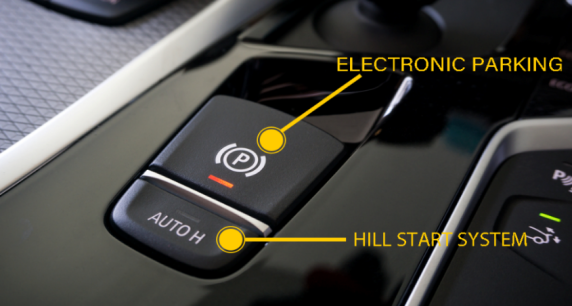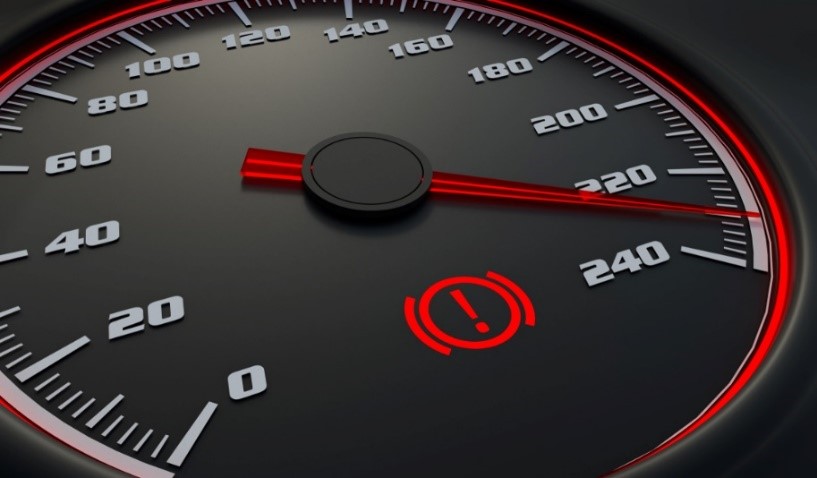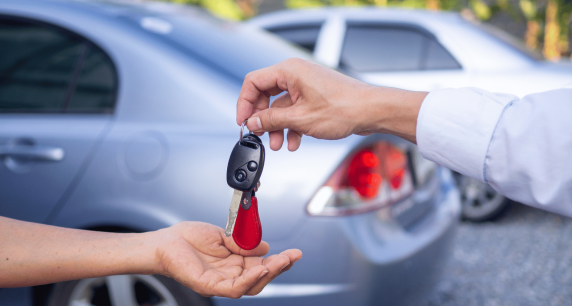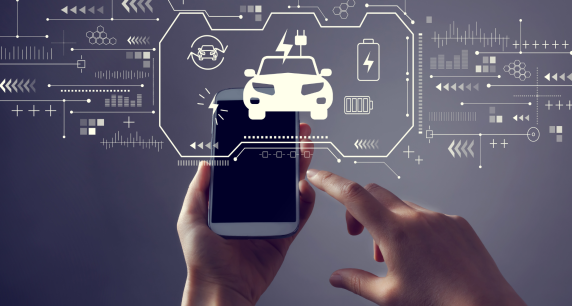What Is Electronic Park Brake and How Does It Work?

The parking brake acts as a backup to your vehicle’s primary brake system.
In this blog, we’ll answer those questions and let you know when you should use your parking brake. We’ll then go over what you can do if you’ve got a stuck parking brake and the best way to keep your vehicle’s parking brake in perfect condition.
HOW DOES THE ELECTRONIC PARKING BRAKE WORK?
The system is controlled by the electronic parking control unit. When the signal comes, the working electric motor rotates, this rotation movement is transmitted to a gear mechanism by a belt (timing belt pulley). This gear mechanism (gear box) reduces the rotational speed and converts the rotational movement to thrust, pushing the brake piston to the pads and brakes to the discs.
When braking and the piston-pad rests on the disc, since the electric motor will draw a lot of current, this increase in current is measured, at this moment the current is cut off and the braking process is finished. If the electric parking brake is desired to be opened, the pin that pushes the piston forward is pulled back by making a reverse rotation and the brake is released.

The electric brake mechanism is integrated with the hydraulic brake mechanism. A pin-shaft is placed inside the hydraulic-filled brake piston, which takes the thrust from an electric motor and pushes the piston.
3 DIFFERENT TYPES OF PARKING BRAKES
Generally, you’ll come across these three types of parking brakes:
- Centre Lever Parking Brake
The most popular kind of emergency brake is the centre lever parking brake (or handbrake). It comprises of a lever that is situated in your car’s middle, between the two front seats.
You only need to lift the parking brake lever up to activate a centre lever parking brake.
All you need to do to release the handbrake is push the button at the end of the lever and then depress the centre lever.
- Foot Pedal Parking Brake
To the left of the driver’s footwell is a small pedal for a foot pedal parking brake system (also known as a foot brake).
The clutch pedal, conventional brake pedal, and accelerator pedal are all located in the area below the steering wheel known as the driver’s footwell.
You must depress the parking brake pedal all the way until you hear a click, at which point your parking brake is engaged, in order to engage the foot brake. Find the lever directly above the brake pedal, then pull on it to release the foot brake.
- Push Button Parking Brake
The parking brake with a push button (available in cars with an electronic park brake system) is perhaps the most user-friendly.
To engage the emergency brake, just press the electronic parking brake button on your car’s console. Press the button one more to disengage the electric parking brake.
Nevertheless, regardless of the kind of parking brake your car utilises, it’s important to understand when and why to activate it.
ELECTRONIC PARKING BRAKE WARNING LAMPS AND THEIR MEANINGS:
ELECTRONIC PARKING BRAKE CONTROL LAMP: It lights up when the button is pressed and the brake is activated.

BRAKE SYSTEM CONTROL LAMP: It illuminates when the parking brake is applied.

ELECTRONIC PARKING BRAKE FAULT LAMP: It lights up if there is a fault in the system. You should go too service.

AUTO HOLD (HILL HOLD ASSIST) CONTROL LAMP: Located on the button, it lights up if the hill start assist system is active.

(Operating modes may vary depending on brand and model)
The parking brake can always be used with the ignition off. It squeals. The ignition key must be turned on in order to release the electronic parking brake. Pressing the button with the foot on the brake pedal is necessary to release the brake.
When the driver presses the gas pedal while the door is shut, the seat belt is tightened, the engine is running, and the parking brake is released automatically. Based on the motor torque and ramp slope, the auto-release time is determined.
When stopping in traffic or accelerating up a ramp, the car won’t reverse if the parking brake is engaged. The program will start up automatically.
WHEN SHOULD YOU USE THE PARKING BRAKE?
Like many automobile owners, you probably only use the hand or foot brake while parking on a hill or other steep slope. Additionally, if your car has an automatic gearbox, you probably use the parking brake even less frequently.
Unfortunately, the parking brake cable and other parts might deteriorate and cease to function if the parking brake or emergency brake is not utilized for an extended period of time. As a result, there is a risk to your safety that your emergency brake won’t function when you need it.
Additionally, failing to utilize the hand or foot brake when parking an automatic transmission car might harm the parking pawl.
A little gear attached to your car’s automatic transmission system is called a parking pawl (or pin). The parking pawl locks the gears of your automatic gearbox when you put your car’s transmission in Park (P).
The tiny parking pawl is put under a lot of stress every time you park your car on an incline without using the emergency stop. And under such pressure, it can malfunction, harming your transmission system.
TO SUM UP:
Generally speaking, apply the parking brake each time you stop your car.
No matter if the terrain is flat or steep, or if your car has an automatic or manual transmission, perform the action.



